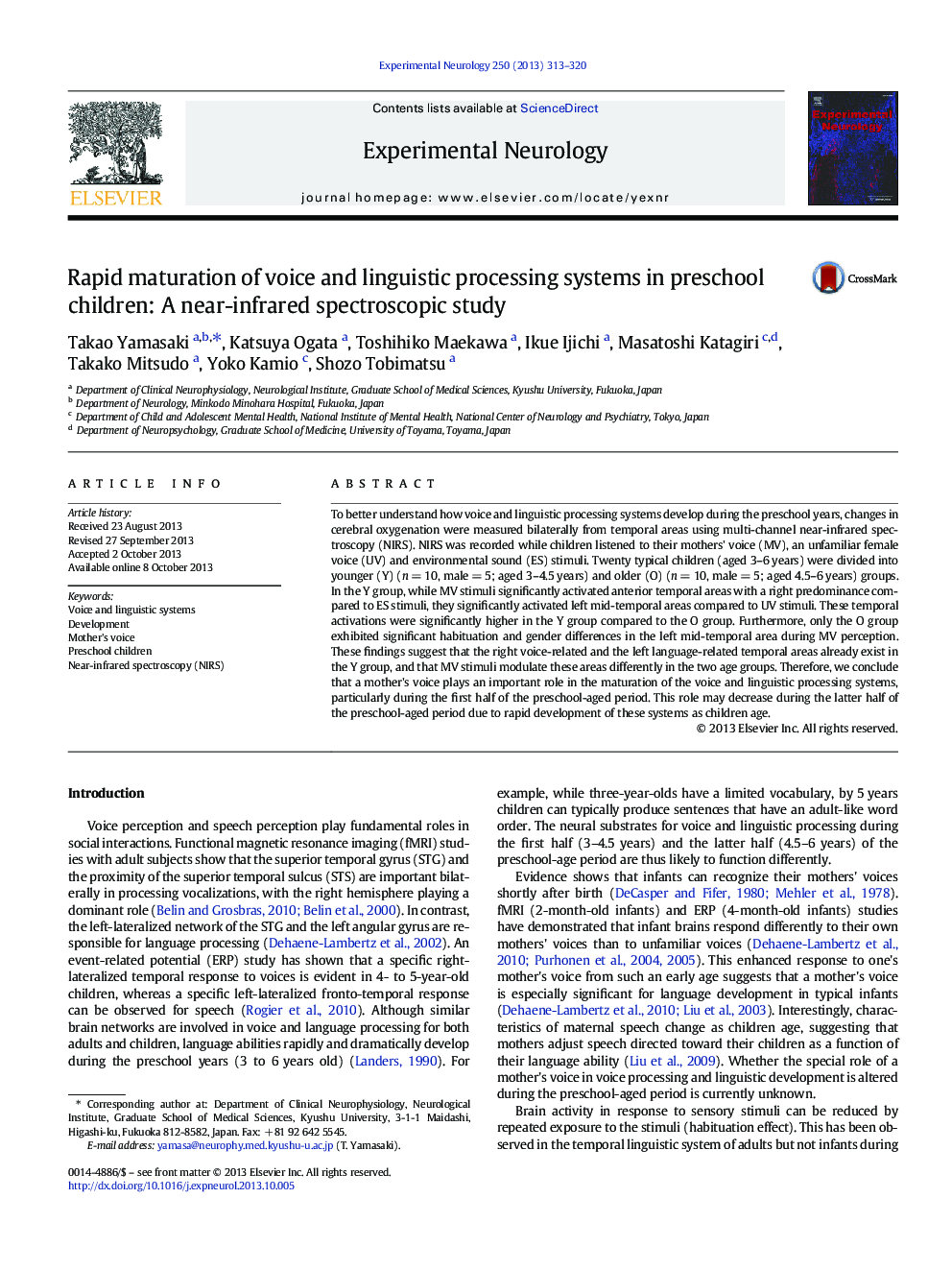| Article ID | Journal | Published Year | Pages | File Type |
|---|---|---|---|---|
| 6017952 | Experimental Neurology | 2013 | 8 Pages |
Abstract
To better understand how voice and linguistic processing systems develop during the preschool years, changes in cerebral oxygenation were measured bilaterally from temporal areas using multi-channel near-infrared spectroscopy (NIRS). NIRS was recorded while children listened to their mothers' voice (MV), an unfamiliar female voice (UV) and environmental sound (ES) stimuli. Twenty typical children (aged 3-6 years) were divided into younger (Y) (n = 10, male = 5; aged 3-4.5 years) and older (O) (n = 10, male = 5; aged 4.5-6 years) groups. In the Y group, while MV stimuli significantly activated anterior temporal areas with a right predominance compared to ES stimuli, they significantly activated left mid-temporal areas compared to UV stimuli. These temporal activations were significantly higher in the Y group compared to the O group. Furthermore, only the O group exhibited significant habituation and gender differences in the left mid-temporal area during MV perception. These findings suggest that the right voice-related and the left language-related temporal areas already exist in the Y group, and that MV stimuli modulate these areas differently in the two age groups. Therefore, we conclude that a mother's voice plays an important role in the maturation of the voice and linguistic processing systems, particularly during the first half of the preschool-aged period. This role may decrease during the latter half of the preschool-aged period due to rapid development of these systems as children age.
Related Topics
Life Sciences
Neuroscience
Neurology
Authors
Takao Yamasaki, Katsuya Ogata, Toshihiko Maekawa, Ikue Ijichi, Masatoshi Katagiri, Takako Mitsudo, Yoko Kamio, Shozo Tobimatsu,
